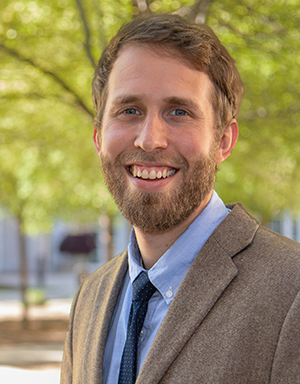
We talk with leading educators and researchers to learn more about the people and topics of asphalt technology.
Dr. Benjamin Bowers is an assistant professor in the Department of Civil and Environmental Engineering at Auburn University.
What drew you to pavement engineering?
Simply put, sustainability. My master’s degree was focused on geotechnical engineering, specifically subgrade stabilization. I sometimes joke that I wanted to build my career from the ground up, but that isn’t the whole truth. During my graduate studies, I read the book “Cradle to Cradle” and it inspired me to pursue circularity in design. That led me to a circular material – asphalt pavements. Society doesn’t just benefit from the aggregate, but also the binder present in the mixture and it can be recycled repeatedly for an equivalent use (pavement). Furthermore, we can use additives and other materials to enhance performance and recyclability. The opportunity to work in this space was just too tempting to pass up!
What makes an asphalt pavement truly resilient?
Asphalt pavement already possesses many “resilient” features: it’s designed with climate as a consideration (see performance grading), has numerous additives that can be used to adapt it to changing conditions, is fast to reconstruct and recover and offers specific structural and mixture types such as perpetual (long-life) pavements that can withstand repeated loading and porous asphalt that can help mitigate stormwater challenges. The interesting thing is that all of the examples I just listed already exist – these are tools we use outside of the context of resilience. Of course, there’s also room for innovation.
How can we better equip our roads for climate-related disruptions?
We need to start applying “resilient thinking” to our design process. That process is twofold: First, it is the individual responsibility of the designer to consider resilience just like they do performance, cost and sustainability (all of which are related to resilience, by the way). Second, there is a need to establish frameworks or tools that can be used to prioritize our assets. For example, we should consider the vulnerability of our pavements to various hazards, evaluate our level of acceptable risk and then make decisions to harden or adapt our pavement system to withstand climate-related disruptions. We may decide to do something extreme; other times we may accept that we should do nothing and anticipate the potential to perform a rapid repair. At the end of the day, it’s all about planning and expectations.
What new approaches will we see in asphalt recycling?
There are two major ways I can see asphalt recycling changing: balanced mix design (BMD) and cold recycling. First, BMD may open the door to much higher recycled asphalt pavement (RAP) contents. Mix producers have a chance to increase innovation and owner agencies have a performance benchmark to ensure they receive a quality mix. Second is cold recycling, which is not new but is experiencing a renaissance of sorts. The ability to use 100 percent RAP in a mixture is attractive for both economic and sustainable reasons (e.g., recycling, greenhouse gas reduction). My research group is studying the introduction of rejuvenators to the cold recycling process and investigating the similarities between this new, hybrid material with traditional cold recycling and hot mix asphalt.
In what area should today’s students focus their asphalt research?
I don’t think there is a specific area that a student should focus their research on, but I believe that it is more important to understand the holistic nature and interconnectedness of their research and the asphalt pavement as a system. Understanding connections between novel materials, mix design, structural design, maintenance and preservation and life cycle costing is critical. Building an understanding of general sustainability and resilience principles beyond what is offered in a traditional civil engineering curriculum is also helpful. Other disciplines, both within and outside of civil engineering, have a lot to offer with respect to our creative design process. The world is complex, asphalt is complex, and we should joyfully embrace the opportunity to explore innovative solutions













